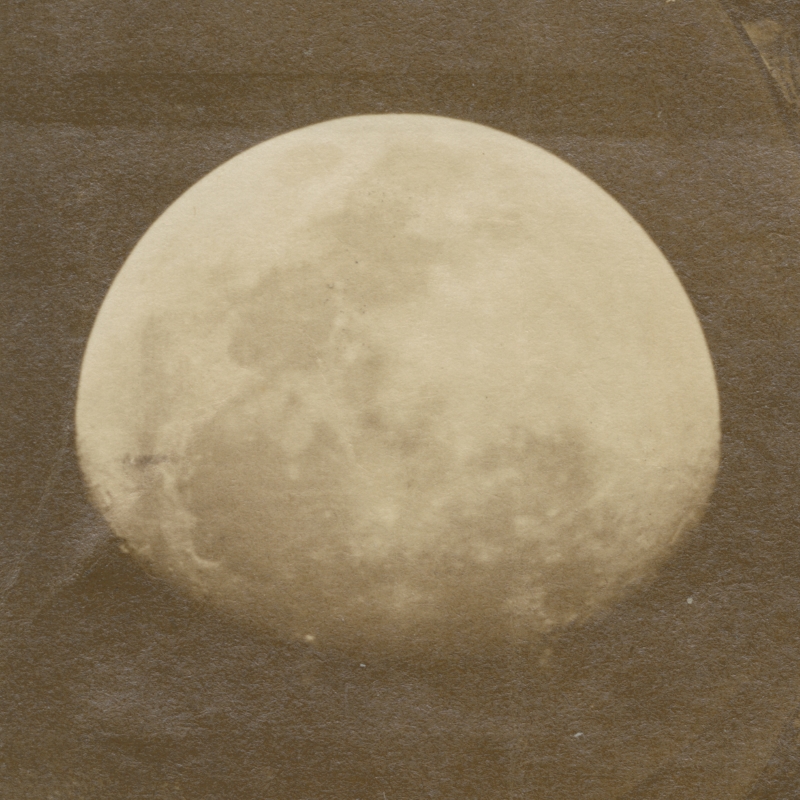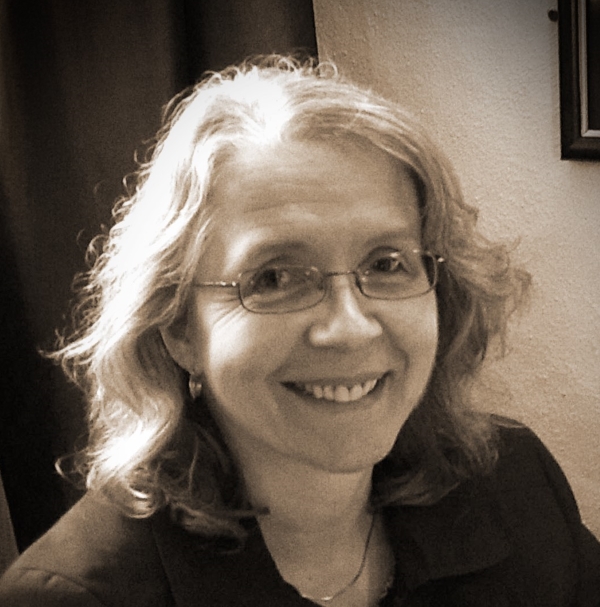Virginia Mills takes a look at our archives on nuclear physics, from Ernest Rutherford to the Harwell Laboratory.
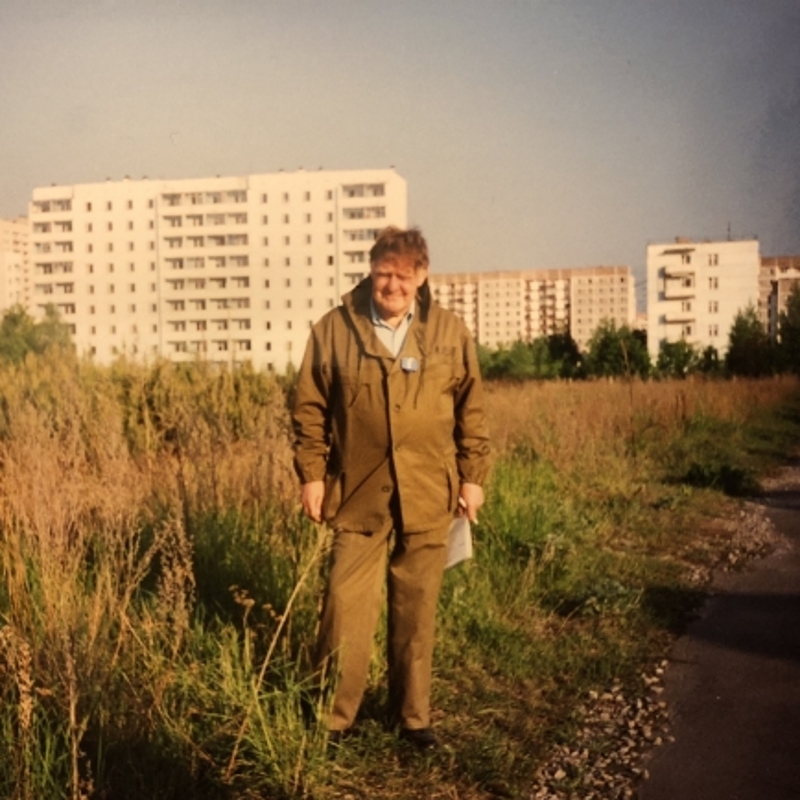
Royal Society archivists continue to collect the records of past and present Fellows, documenting scientific progress and the work of the Society. A recent donation came in the form of the papers of Brian Eyre FRS (1933-2014), former Chief Executive of the United Kingdom Atomic Energy Authority (UKAEA), which prompted a look at the records of nuclear physics in our vaults.
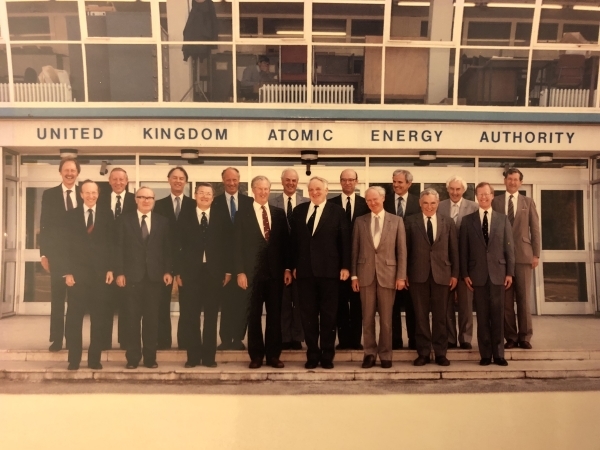
Photograph of Brian Eyre (third from right in front row) and UKAEA staff
Going back to the beginning, future Nobel Prize winners such as Henri Becquerel ForMemRS, Marie and Pierre Curie and John Joseph Thomson FRS (later President of the Royal Society) had been studying radioactivity and atomic structure since the end of the nineteenth century, but it is Ernest Rutherford FRS who is considered the father of nuclear physics due to his discovery of the nucleus.
Some of the earliest papers on nuclear physics were read and published at the Royal Society. In 1906 Geiger (who gave his name to the radioactivity meter) published a paper in the Royal Society’s Philosophical Transactions A describing experiments he had done with Rutherford concerning alpha radiation. These experiments would lead to the discovery by Rutherford and his collaborators of the nucleus as the basis for atomic structure. This breakthrough was communicated to the scientific community by Rutherford at the Royal Society in 1911. Incidentally, one of the stranger artefacts in the Royal Society collections is a potato masher made by young Ernest for his grandmother – every budding physicist needs a hobby I suppose.
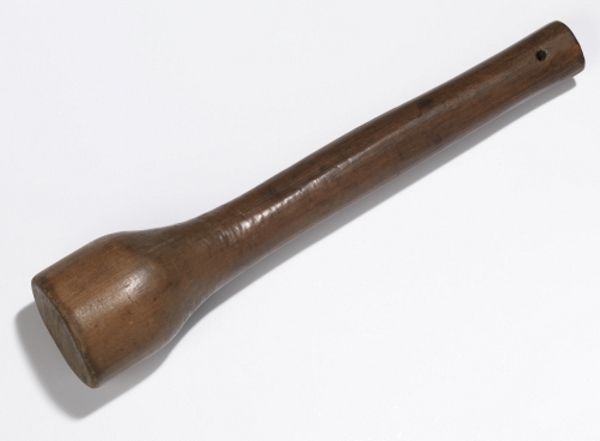
Ernest Rutherford’s potato masher, c.1888
I have written previously about the Halban and Kowarski papers from World War II. Indeed, the history of nuclear physics is often one of controversy and tragedy, but in searching through the archives I found a wonderfully uplifting tale of international scientific collaboration in the wake of disaster. The story of Sir Frederick Warner FRS (1910-2010) will be a balm to anyone who has recently watched the powerful HBO series Chernobyl, a dramatization of the devastating failure of the nuclear reactor in the Ukraine in 1986.
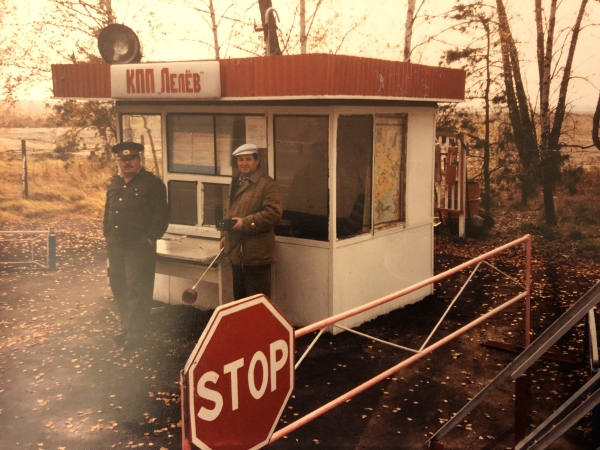
Photograph of a checkpoint for the 10km Chernobyl exclusion zone, 1990 [MS/891/1/1/2]
Warner was internationally renowned for his pioneering work in building chemical plants and improving health and safety conditions for workers in the chemical industry. His expertise in environmental impact, particularly of radiation, saw him lead the first international team into Chernobyl to assess the damage in 1990, returning in 1994.
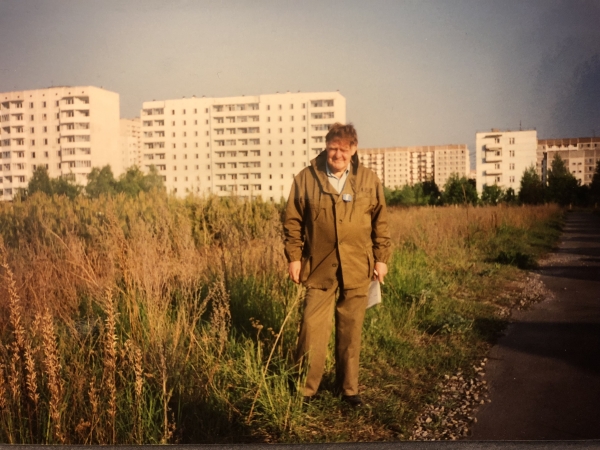
Photograph of Frederick Warner FRS in the evacuated town of Pripyat, 1994 [MS/891/1/2/14]
While ‘Chernobyl tourism’ photographs have recently sparked controversy, Warner’s visit to Chernobyl had unquestionable scientific and humanitarian motives. Disturbed by the fact that 31 young Soviet soldiers and firefighters had died after exposure to high doses of radiation during the containment operation, he later assembled a group of 100 retired engineers and scientists dubbed ‘Volunteers for Ionising Radiation’ who would be available to help during any future such emergencies. After receiving advice from radiobiologists, he reasoned that people who were over 65 would tolerate exposure better than those who were younger, and would have fewer concerns over possible genetic effects.
Returning to our inspiration, Brian Eyre, having done an initial appraisal of the papers at his former home they are now waiting to be further arranged and catalogued so we can make them available to researchers. However, some great photos also caught our eye in this collection and we wanted to put them on display right away.
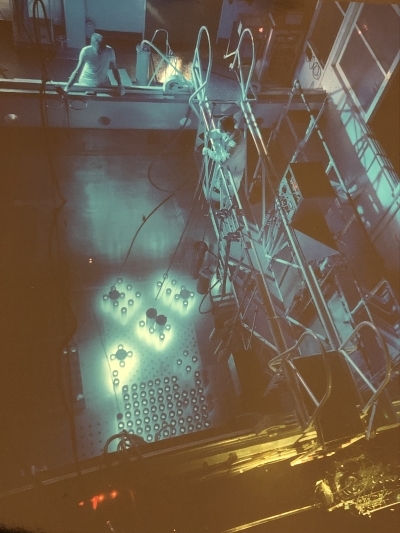
Photograph of test nuclear reactor, papers of Brian Eyre FRS, Royal Society Archive [BLE]
The photos are from a presentation album given to Eyre on his retirement from the UKAEA in 1997. They show the UKAEA’s Harwell Laboratory site near Didcot in Oxfordshire, and one of the test nuclear reactors built there.
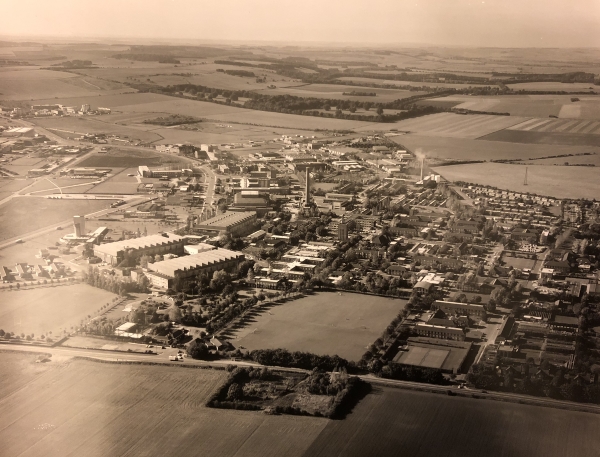
Photograph of Harwell Laboratory
Harwell was the main centre for atomic energy research and development in the UK from the 1940s to the 1990s. Sir John Cockcroft FRS was the founding Director of the facility, established on a decommissioned RAF base in 1945. The site was ideal as it had large military buildings where atomic piles could be housed, and was remote yet relatively close to the nuclear physics expertise centred at Oxford. The site became known locally as ‘The Atomic’. The archive is littered with correspondence to and from Harwell, including letters from Sir Francis Simon FRS.
Eyre worked at Harwell in the Metallurgy Division for various periods during the 1960s-1980s, and played a leading role in research into the mechanisms of radiation damage. He became Chief Executive in 1990 and was made a CBE in 1993 in recognition of his development of nuclear technologies and policies in the UK, a career chronicled in his papers. A fuller biography of Eyre can be found in Biographical Memoirs of Fellows of the Royal Society.
The photo album was on show as part of a display for our 2019 Admission Day, when we welcomed 62 newly-elected Fellows and Foreign Members to the world’s oldest scientific society. And it looks like the Royal Society’s long history with nuclear scientists will continue: one of this year’s new inductees was Peter Butler, and last year we welcomed to the Fellowship Robin Grimes, chief scientific adviser in the Ministry of Defence for nuclear science and technology. Grimes has already archived some of his own papers from his time as Chief Scientific Advisor to the Foreign and Commonwealth Office, all still confidential for now but waiting for researchers of the future to take up the story of fission, fusion and Fellows of the Royal Society.






